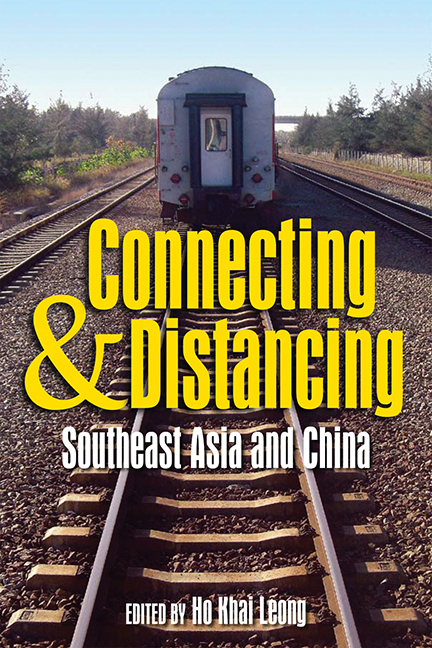Book contents
- Frontmatter
- Contents
- Contributors
- Introduction
- PART I History and Remembrance
- PART II The Cultural and Chinese Identity
- PART III Economy, Politics and Regionalism
- 9 The Economic Emergence of China: Strategic Policy Implications for Southeast Asia
- 10 When Old Regionalism Meets New Regionalism: Taiwan and China in East Asian Regional Integration
- 11 Language Power: Relational Rhetoric and Historical Taciturnity A Study of Vietnam-China Relationship
- Index
11 - Language Power: Relational Rhetoric and Historical Taciturnity A Study of Vietnam-China Relationship
from PART III - Economy, Politics and Regionalism
Published online by Cambridge University Press: 21 October 2015
- Frontmatter
- Contents
- Contributors
- Introduction
- PART I History and Remembrance
- PART II The Cultural and Chinese Identity
- PART III Economy, Politics and Regionalism
- 9 The Economic Emergence of China: Strategic Policy Implications for Southeast Asia
- 10 When Old Regionalism Meets New Regionalism: Taiwan and China in East Asian Regional Integration
- 11 Language Power: Relational Rhetoric and Historical Taciturnity A Study of Vietnam-China Relationship
- Index
Summary
INTRODUCTION
This chapter examines Vietnamese strategies in maintaining a normal diplomatic relationship with China through the concept of “language power”. This notion of “language power” comprises both relational rhetoric and taciturnity, and can be applied both on state and non-state levels. Most previous literature on Vietnam-China relationships focus on the themes of persistent Vietnamese resistance against Chinese dominance and the Vietnamese fighting spirit. This chapter argues that besides resistance, Vietnam is also adept in crafting diplomacy to pacify the ambition of its giant neighbour and maintain a relatively peaceful and harmonious relationship. Since the normalization of the China-Vietnam diplomatic relations in 1991, both Vietnam and China have undertaken a pragmatic interactive strategy with an eye to the economic benefits that stability and peace may bring. The language power analysed in this chapter demonstrates that such an effort enlisted by the Vietnamese particularly since 1999 has been part of the normalized diplomatic rituals in both official and civil spheres.
The chapter will firstly relate Vietnam to China in terms of its cultural and political relationships. It will dilate the arguments of the previous literature and point out that some of these views have been mistaken. In the second half of the chapter, the concept of “language power” will be elaborated. Part of this language power engages routinized intimacy and friendship rhetoric painstakingly displayed by state actors as well as laypeople. In contrast to the tactical display of the relational rhetoric in different social and political interactive spaces with the Chinese, the Vietnamese also employ the power of “silencing” on historical conflicts. Language power does not merely enlist the power of speeches, it also takes on the action of taciturnity. Silence can be power.
To illustrate this analytical space, I rely heavily on the border as both a geo-historical and metaphoric plane to explore the theme of “language power”. The “border” as a conceptual and geographical space has generated lots of conflicts as well as intimacy between China and Vietnam.
- Type
- Chapter
- Information
- Connecting and DistancingSoutheast Asia and China, pp. 230 - 251Publisher: ISEAS–Yusof Ishak InstitutePrint publication year: 2009

